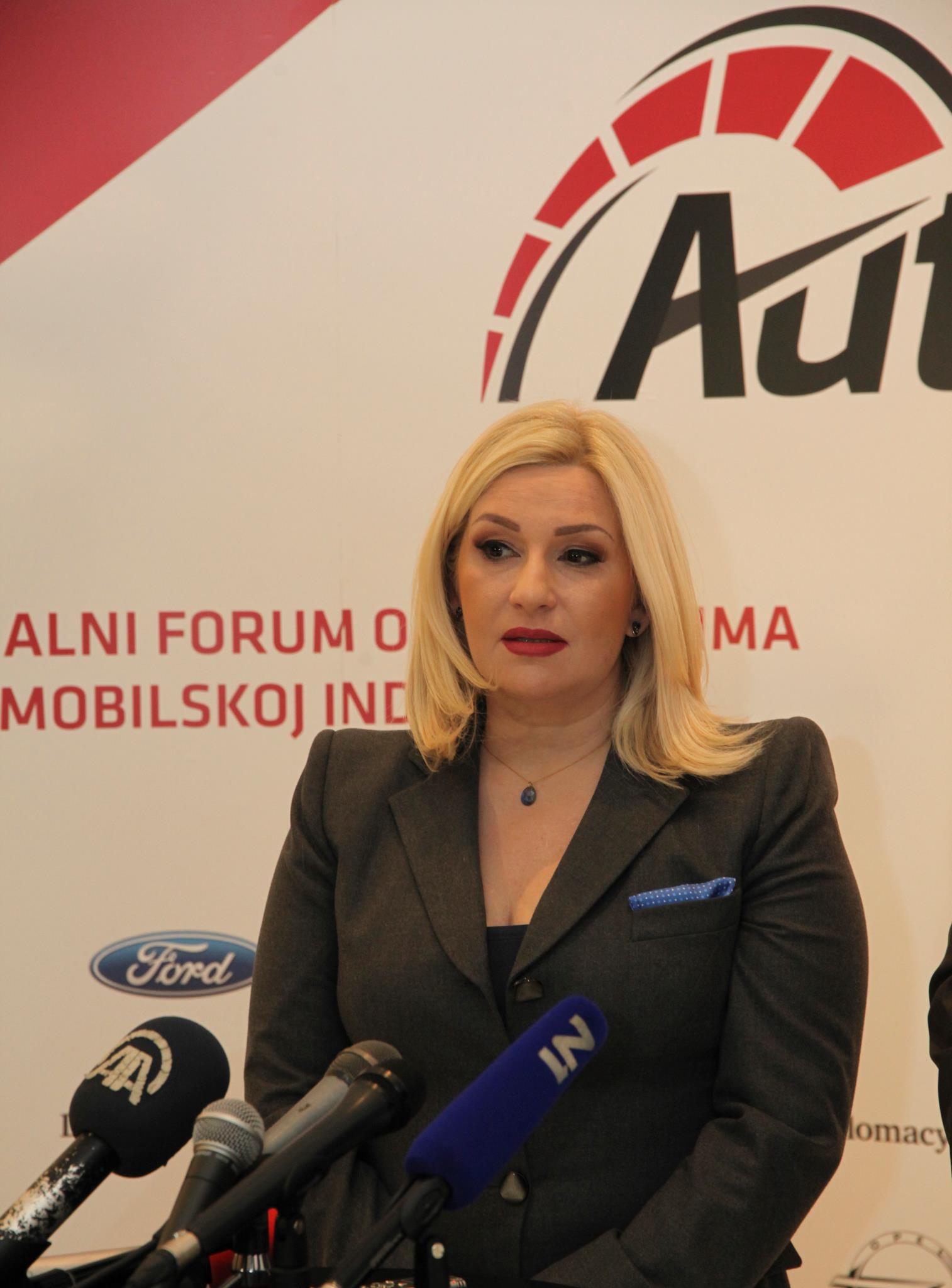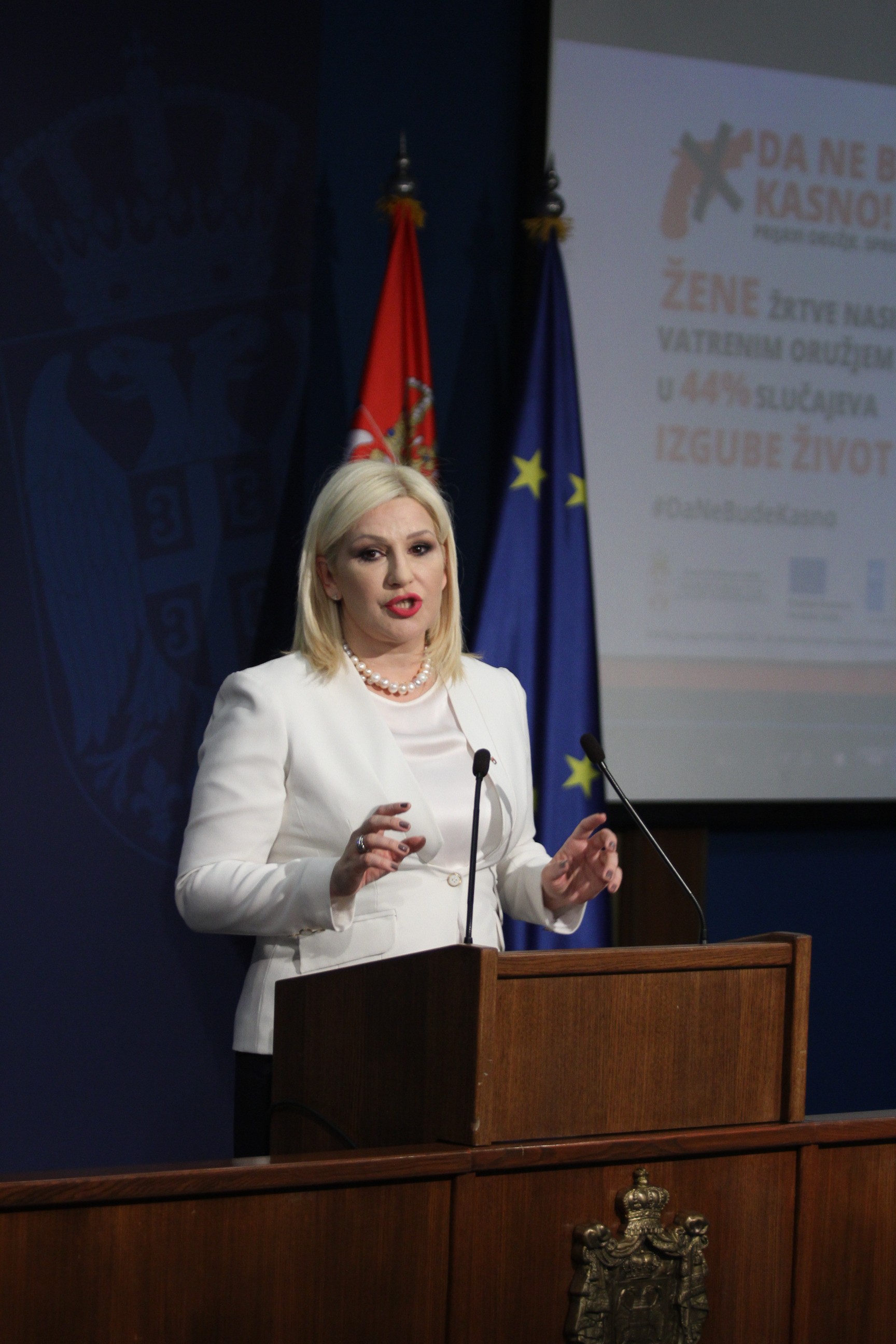There are no countries in our surroundings that offer better conditions for investors than Serbia, and that is my message to investors.
“I am confident that investors will have the best possible conditions for investing and business expansion in Serbia. One of the advantages that that our country has is e-permits, which have completely changed the perception of the construction segment, and have secured transparency while reducing corruption to the minimum and enabling investors to quickly acquire the documents needed to commence and complete their projects in the shortest possible period. I would like to remind you that before this e-service was introduced in Serbia, the average waiting time for permits was 264 days, while today this period has been reduced to only five working days”.


What are the main, reform-related tasks of your ministry in the following period?
The priority in the following period for us is certainly going to be conducting a comprehensive land registry reform in order for investors to be able to register their real estate in only a few days. Our ambition is to implement this just like we have implemented the revolutionary e-permit procedure which I am proud to say was the driving force behind the growth in the construction sector. This is also the proof that we, in the ministry that I am at the helm of, have launched and implemented reforms that our predecessors did not to or did not know how to implement for decades. We have also proved that if we work as a team, we are able to completely transform certain segments.
Today, investors can obtain a building permit in five days on average instead of waiting for months on it. I am sure that the endless waiting period and the paperwork, in addition to having to go from counter to counter, often deterred investors from investing in Serbia. After paying close attention to how the e-permit system works over a period of one year, we have decided to continue improving it.
We have also started and will continue with a comprehensive reform of railway companies. We have split the Serbian Railways into four separate companies – Srbija Kargo, Srbija Voz, Infrastruktura Železnice and Železnice Srbije AD, in an effort to boost railway companies so that they could start operating along the market principles, and so that they don’t rely on state budget subsidies so much because we can use that money for other purposes.
We have ‘disengaged’ approval of loans, launched infrastructure projects that had been at a standstill for years, and started modernizing railways. Not so long ago, the average train speed in Serbia was 50km/h, and on certain segments, the trains moved at 30km/h. Today, the average train speed in certain segments is around 120km/h. This year alone, we plan to commence works on 255.1km or railways which is an investment worth approximately 856.2 million EUR. Our goal is to have a total interoperability with the EU railways, and to comply with the railways in Southeast Europe.
Which of the measures implemented by your ministry would you say were the most important for advancing the business environment in Serbia?
All measures that we implement have one goal and that is for Serbia to join the club of the 20 top countries in the world on the World Bank’s Doing Business List. We plan to abolish the use of stamps, enable online payment of property tax, revoke parafiscal levies… I am confident that we are going to improve our ranking on this prestigious list and nobody can stop us in that.
In order to advance our business environment, the government has formed a working group together with the Foreign Investors Council in order to jointly come up with best solutions for companies that operate in Serbia, whether domestic or foreign. Our aim is to identify and remove all known barriers for doing business, and provide the best possible business conditions for investors.
Our success is validated by the fact that, on the last Doing Business list, our country made it to the top 10 countries in regard to reforms. We currently occupy the 47th place which is the best ranking that Serbia has had since this list exists. In only two years, we have jumped 44 places, and all credit for that should go to the implementation of electronic building permits.
What are the key advantages that Serbia offers to investors in the construction sector?
We are working on completing a road network, and modernize railways which are very important for investors. This year, we are going to finish the construction of the road segments of the Corridor 10 which is something that our citizens have been waiting for 30 years. Once we do this, we are going to have a direct motorway connection to the borders with Hungary and Croatia, and onwards to Bulgaria and Macedonia. All that remains to be done next year is the most difficult segments which we are also going to finish pretty quickly. To illustrate the importance of the Corridor 10 for investors, let me just mention that 55 factories and production facilities have been opened along the Corridor in the last two and a half years so that the goods produced in Serbia can get to Europe in the fastest possible manner.
We are also working intensely on the Corridor 11 that will give us an exit to Montenegro. Yes, there have been problems with this Corridor, as it usually happens when you are building a motorway, but what sets us apart from our predecessors is our readiness and determination to remove all existing barriers. We are also reconstructing the railway segment in the direction of Montenegro, the so-called Bar railway.
After the Belgrade-Budapest railway is constructed, which is a project that we are realizing with Chinese partners, Serbia will become a regional transit hub, and a part of a new transport corridor that connects Asia to Europe, which, in turn, creates an opportunity for our country to have a bigger goods transport and more new logistics centres, as well as to attract more investments.
It is important to mention that Serbia is a country that can offer to investors something they consider top priority which is political stability.
How much was the construction activity revived as a result of the said changes?
In the last two and a half years, which is how long we have been conducting reforms, the construction sector’s share in the national GDP grew from 4% to 5.5%. We are not going to stop until this share reaches 7% because we have enough potential to achieve that.
To illustrate this, let me quote the official CEOP data which shows that there are around 8,500 active construction sites in Serbia at the moment. To be more precise, a total of 11, 816 applications for registration of construction work have been submitted, and, out of this number, 9,779 had a positive outcome. Also, 1,586 applications for technical receipt of a facility in construction terms have been submitted, out of which 1,331 applications had a positive outcome.
This just shows how important were reforms in the construction sector, and their contribution to implementation of investments and creation of new jobs because each new construction sites translates into new jobs for our construction workers.
What progress has been made with the digitalization process?
We have been increasingly transferring business operations and communication between companies and the state online. We are going to make the old-fashioned stamps obsolete, and we are introducing new services and digitalization wherever possible. The e-permit, that we frequently mention, was only the beginning, and now our plan is to link this new electronic system to public notaries, the Tax Administration and the land registry. Our goal is to digitalize the land registry, and we have already made first steps in that direction. Also, within the framework of the Working Group for the Doing Business list, we are working on introducing online payment of property tax and electronic registration of companies with the Business Registers Agency.
Which segment of digitalization will be most useful to investors?
E-permit has drastically reduced the time needed for issuing of this important document in order for investors to start their works as soon as possible. We have already mentioned several times the benefits of this system. Once we establish electronic land registry, investors will be able to register their property in only three days.
We are also planning on establishing e-space, i.e. digitalization of spatial plans. Sometimes the waiting period for a spatial plan to be drawn up can last up to several years, and oftentimes they are forced. Our goal is to have them finished in the space of three to twelve months which is three to four times shorter than the current period.
In conducting these reforms, I am counting on the support from all relevant stakeholders and investor associations. I am also counting on hearing their opinions and suggestions in the next stages so that we can find the best possible solution together which, in the end, will be useful both to the state and businesses that are its part, whether they are domestic or foreign investors.